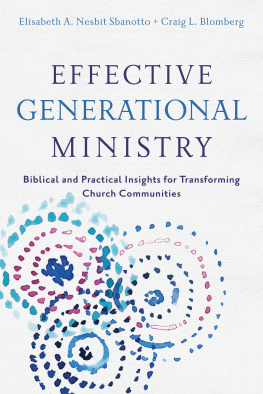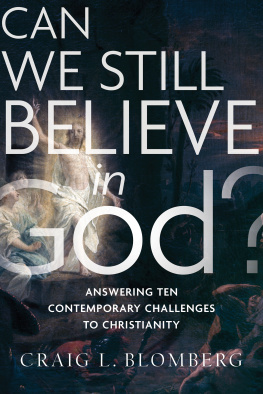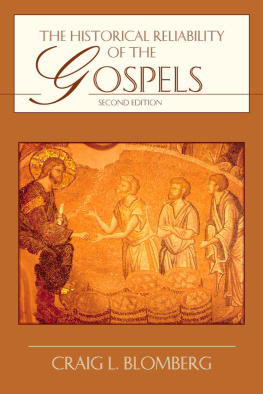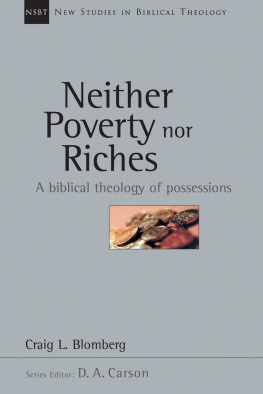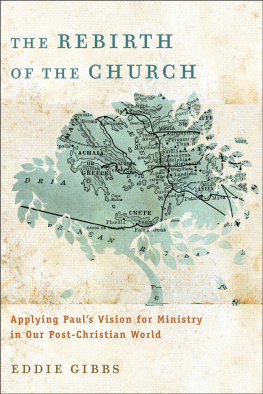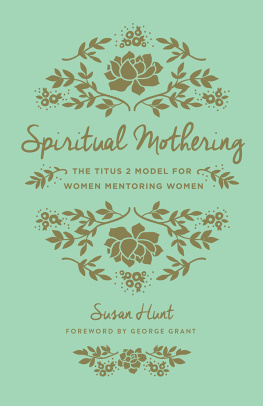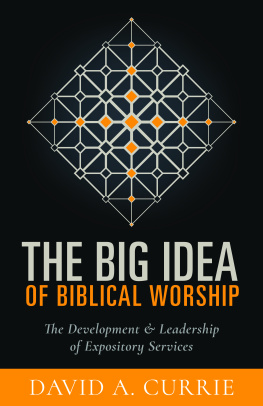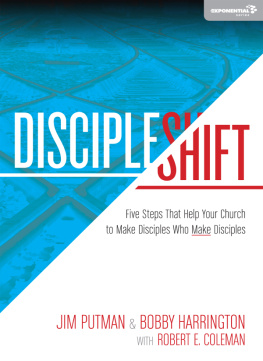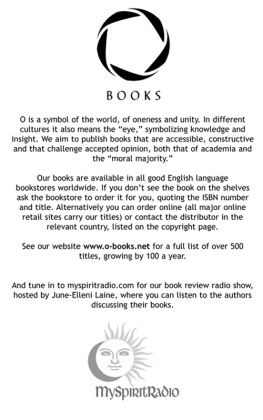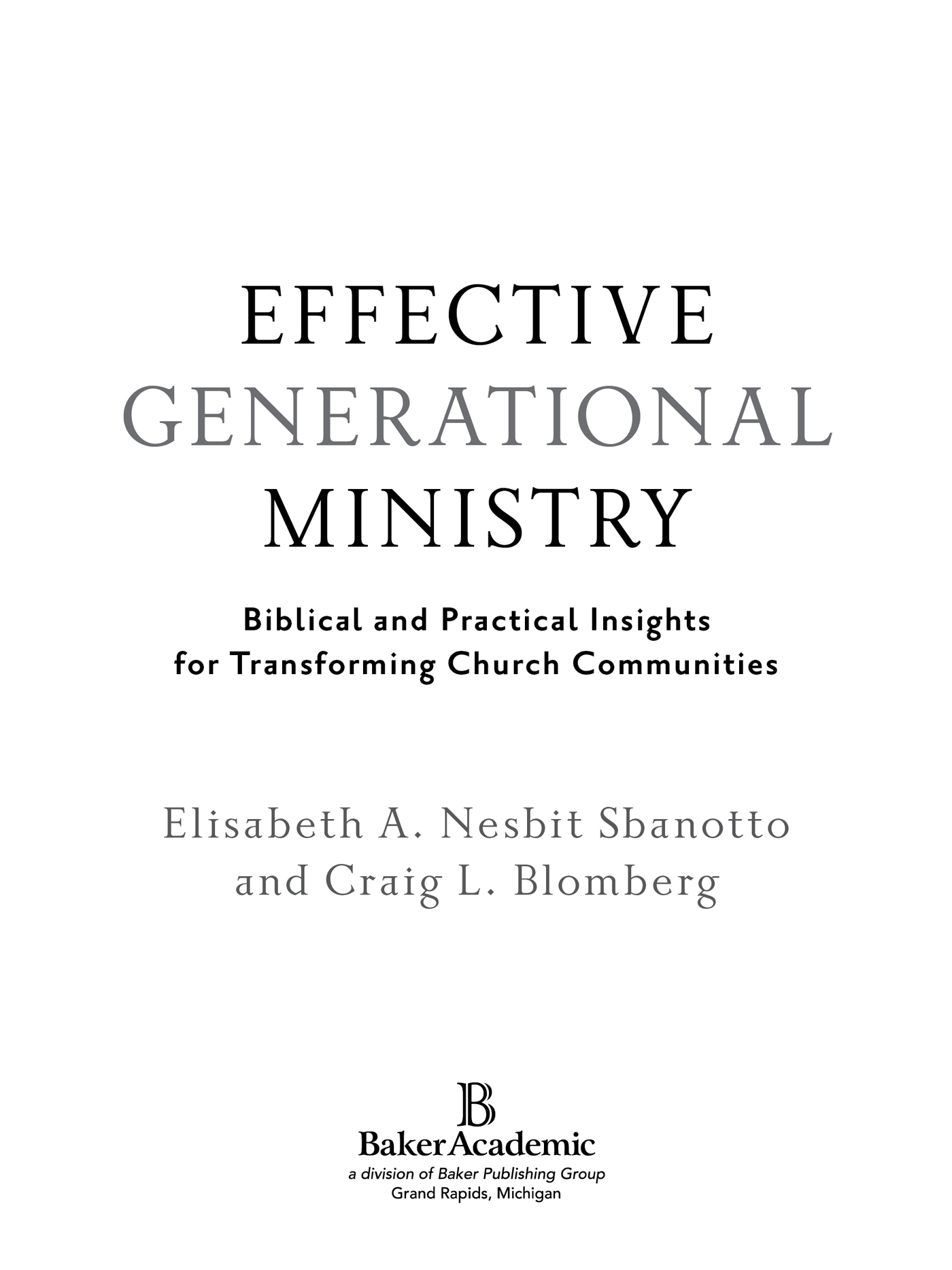1. Boomers at Large
2. Boomers in Light of the Bible
3. Priorities for Ministry with Boomers
4. Generation X: The Lost Middle Child
5. Xers in Light of the Bible
6. Priorities for Ministry with Xers
7. Millennials: Apple of the Eye
8. Millennials in Light of the Bible
9. Priorities for Ministry with Millennials: Getting in the Game
Preface
N umerous voices in the publishing world these days clamor for collaborative projects. In a world characterized by the explosion of information and access to that information, many projects require multiple authors. At least the finished products are better if more than one person contributes to them. In addition to numerous singly authored books, I (Craig) have been privileged to coauthor and coedit several other books (and a couple of journal articles) with talented and gifted friends and colleagues. Not only has this made better contributions to my field (New Testament studies) possible, but I have benefited from learning about topics and disciplines into which I might not otherwise have ventured so extensively. This book is the latest result of my coauthoring and cross-disciplinary interests.
Elisabeth Nesbit Sbanotto was my student and is now my colleague at Denver Seminary. She is a vivacious, hardworking, bright, and very gifted researcher, professor, consultant, and counselor. As the years go by, I expect her to make a considerable mark in the field of publishing as well. I have learned so much from her already in her four years on faculty with us, and I count her as a dear friend.
Generational similarities and differences have always intrigued me. I never understood the need for the generation gap that my peers made famous when we were young adults. I liked my parents and appreciated most of their values! The best small group and Bible study experiences I have had, hands down, have always been intergenerational in makeup. Although I am a Baby Boomer who works with primarily Baby Boomer colleagues, at least those who are full-time professors at Denver Seminary, I attend a church that was established as a city-outreach ministry to Gen-Xers fifteen years ago. Today it has at least as many Millennials as Xers. My two daughters and their closest friends are Millennials, and the longer I teach, the higher a percentage of my students fall into that category as well. So I have at least some sustained experience with the topics in which Elisabeth is an expert, and it behooves me to learn as much as I can to complement those experiences with the solid research foundation she brings to the table.
The 1970s and 1980s formed the peak years of the development of the homogeneous church growth movement as a philosophy. Practitioners carried on with some success through the 1990s and early 2000s. But over the last ten years or so, Millennials have been increasingly calling for more intergenerational activities. Given half a chance, they like their parents and their parents peers. Meanwhile, aging Baby Boomers, not least those becoming grandparents, value connections with their children, their childrens peers, and with their grandchildren as well. And Xers patiently wait their turn in leadership, hoping to be given the opportunity rather than become the generation that just gets skipped over.
Too many churches and parachurch organizations know too little about the similarities and differences among the three largest generations that make up the American populace today, and they often suffer because of it. That fact more than any other forms the motive for creating this book. We would like to thank the administration and board of trustees of Denver Seminary for continuing to value and promote faculty research and writing in an era when too many Christian institutions value it too little. I am grateful for so many congenial colleagues on our faculty who support those of us who write a little more than some others. I have profoundly appreciated the help of my research assistants Emily Gill and Sara Bibb Evans during the parts of the three academic years during which this work was conceived and carried out. I am particularly beholden to my grader, Darlene Seal, who stayed with me for three years in that capacity and developed such expertise that I rarely needed to go over her work with anything more than the most cursory of spot-checking. These three young women freed up so much time for my actual writing that I can scarcely begin to thank them enough. Elisabeth would like to thank Roy Farley, Kristin Higgins, Lynn Koch, and Jim Hammons at the University of Arkansas for serving as her committee in the design, execution, and completion of her dissertation, and to all who participated in the focus groups themselves. She is grateful to dear friends Amy Anderson, Alycia Homeyer, and Joy Meekins, and to her parents, Gary and Hanna Nesbit, for their unwavering support and encouragement throughout the dissertation research process that provided the foundational material for this book. Finally, she is indebted to her mother, Hanna Nesbit, and her Mormor, Lisa Schmidt, for teaching her to be curious about peoplealways striving to see the good in others and to understand both how and why others see the world the way they do.
Elisabeth and I would like to dedicate this book to two of our senior professors on the Denver Seminary faculty. Joan Burgess Wells taught counseling for eighteen years full-time and several more part-time both before and after that tenure. Jim Beck taught counseling for twenty-two years full-time and several more classes after his retirement. Joan was a special encouragement to Elisabeth as well as a mentor and friend. Jim was a special encouragement to me, as well as a cherished colleague, fellow pray-er, and good friend. It is to these two special individuals that we offer this volume.

